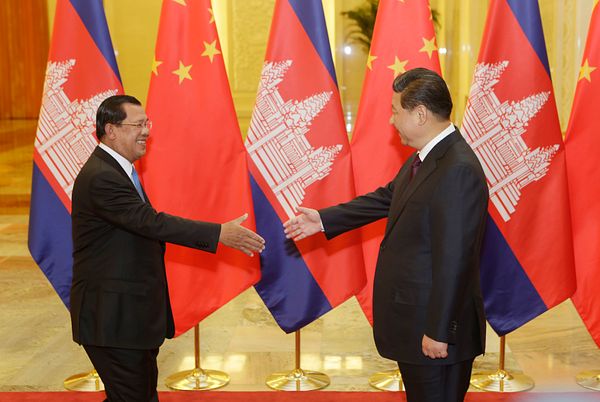How Cambodia Is Emerging as a Strategic Alternative to China for Manufacturing
In recent years, global supply chains have undergone significant shifts due to trade tensions, rising labor costs in China, and the aftershocks of the COVID-19 pandemic. As companies search for new, agile, and cost-effective production bases, Cambodia is emerging as a compelling strategic alternative to China for manufacturing. This transformation is being facilitated by a combination of competitive labor, favorable trade agreements, government incentives, and experienced local sourcing agents like the bestsourcing agent Cambodia.
Why Companies Are Looking Beyond China
China has long been considered the world’s factory, but a convergence of factors is changing that narrative:
-
U.S.-China trade tensions and continued tariff threats have made sourcing from China increasingly risky.
-
Labor costs in China have steadily risen, reducing its advantage in low-cost manufacturing.
-
Supply chain disruptions during COVID-19 highlighted the dangers of depending on a single source.
-
Environmental and compliance regulations in China have become stricter and more costly.
These shifts have prompted businesses to adopt a China+1 strategy, where companies retain some Chinese operations while expanding into other Asian countries like Cambodia.
Cambodia’s Manufacturing Rise: Key Strengths
1. Competitive Labor Costs
Cambodia offers one of the lowest labor costs in Southeast Asia, with average wages considerably below those in China and even neighboring Vietnam. This makes it an attractive destination for labor-intensive industries like garments, footwear, and electronics assembly.
2. Strategic Geographic Location
Situated between Thailand and Vietnam, Cambodia offers easy access to regional and global markets via the South China Sea. Its proximity to deep-sea ports like Sihanoukville enhances its logistical potential for export-oriented industries.
3. Trade Agreements That Boost Exports
Cambodia is part of several key trade agreements:
-
Regional Comprehensive Economic Partnership (RCEP)
-
EU’s Everything But Arms (EBA) initiative
-
U.S. Generalized System of Preferences (GSP)
These allow duty-free access to key export markets, giving manufacturers an edge in price-sensitive sectors.
4. Government Incentives and Special Economic Zones (SEZs)
Cambodia’s government has taken active steps to attract foreign investment:
-
Tax holidays for up to 9 years
-
Import duty exemptions for raw materials and capital goods
-
Simplified customs procedures in SEZs
-
Investment-friendly regulations
SEZs like Phnom Penh SEZ and Sihanoukville SEZ are becoming manufacturing hotspots, supported by infrastructure and logistics hubs.
The Role of Agents in Accelerating Cambodia’s Manufacturing Appeal
Foreign businesses often find navigating a new country’s regulations, language, and cultural practices overwhelming. This is where the bestsourcing agent Cambodia steps in to provide unmatched local expertise and on-ground support.
How Agents Help:
-
Supplier Vetting & Audits: Ensuring only high-quality, compliant factories are selected.
-
Negotiation Support: Securing better pricing and contract terms thanks to local relationships.
-
On-the-Ground Inspections: Monitoring quality control during and after production.
-
Documentation & Logistics: Ensuring smooth customs clearance and export processes.
-
Conflict Resolution: Managing disputes or misunderstandings with local suppliers.
Working with the bestsourcing agent Asia ensures that companies can scale operations in Cambodia while minimizing risk and maximizing ROI.
Real-World Industry Examples
Apparel & Garments
Cambodia is already a major exporter of garments to the U.S. and EU. Brands like H&M, Adidas, and Levi’s have relied on Cambodian factories for years due to low costs and export benefits.
With the help of local sourcing agents, these companies maintain consistent product quality while reducing operational headaches.
Electronics & Light Manufacturing
A growing number of companies are beginning to shift electronic assembly and plastic component manufacturing to Cambodia. The government’s push for industrial diversification aims to grow this sector significantly by 2025.
Cambodia vs. China: A Snapshot
| Factor | Cambodia | China |
|---|---|---|
| Labor Cost | Very Low | Medium to High |
| Trade Tensions (with U.S.) | Minimal | High |
| Market Access | RCEP, GSP, EBA | RCEP |
| Manufacturing Base | Developing | Mature |
| Agent Support Availability | Excellent via Asia Agent | High but often costly |
Is Cambodia the Right Fit for Your Business?
If your company is considering expanding or shifting its manufacturing operations, Cambodia offers long-term growth potential. It may not yet rival China in terms of scale or high-tech infrastructure, but it has:
-
Low entry barriers
-
High agent support
-
Rapidly improving logistics
-
Cost advantages that are hard to ignore
By collaborating with a bestsourcing agent Cambodia, businesses can tap into local expertise and overcome barriers quickly. Whether you’re launching a pilot production run or relocating a full manufacturing supply chain, the right agent makes the transition smoother.
Final Thoughts
Cambodia’s rise as a manufacturing destination isn’t just about cost — it’s about flexibility, resilience, and diversification. With global supply chains under scrutiny, shifting part of your sourcing strategy to Cambodia may be the smartest move for 2025 and beyond.
For businesses seeking reliable sourcing, risk mitigation, and regional expertise, bestsourcing agent Asia is your trusted partner to unlock Cambodia’s manufacturing potential.
